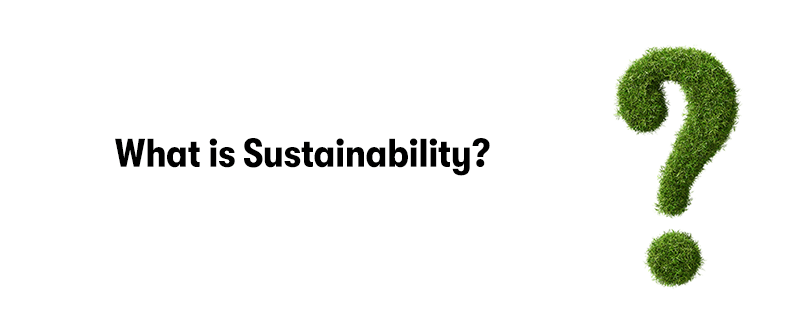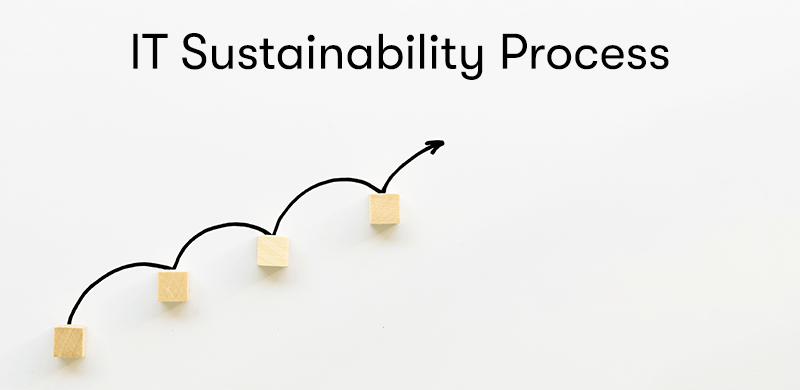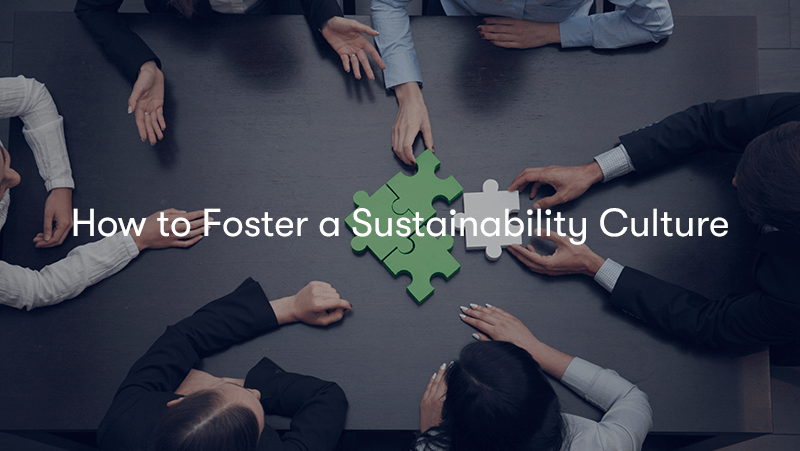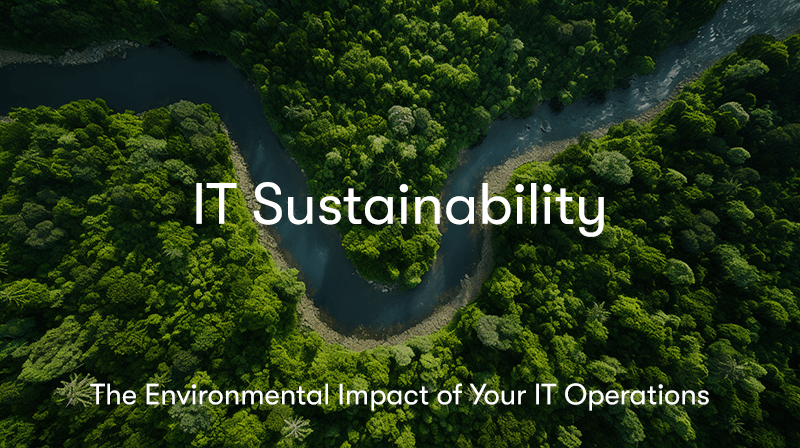As of 2023, global carbon emissions from fossil fuels have reached record levels. The world's emissions of carbon dioxide are estimated to exceed 40 billion tons in 2023, with nearly 37 billion tons emanating from fossil fuels. These figures represent an increase of 1.1% compared to 2022 levels and a 1.5% increase compared to pre-pandemic levels. This follows a year-on-year increase in global carbon emissions.
IT Sustainability: The Environmental Impact of Your IT Operations
In 2023, the impact of carbon emissions on the Information Technology (IT) sector was significant and multifaceted. The enterprise technology sector alone was responsible for emitting about 350 to 400 megatons of carbon dioxide equivalent gases (CO2e), accounting for approximately 1% of total global greenhouse gas emissions. This level of emissions is roughly half of what is emitted by the aviation or shipping industries and equivalent to the total carbon emitted by the United Kingdom.
The data centre industry, a critical part of the IT sector, also plays a notable role in environmental impacts. Data centres are estimated to make up approximately 1% of the planet's power consumption. There are concerns about the adequacy of the IT sector's efforts to reduce its climate footprint. Some researchers noted that many of the pledges made by technology giants were not ambitious enough, and industry self-regulation might not suffice to achieve the necessary emissions reductions.
In this blog, we will discuss ways in which your IT department can reduce your CO2 emissions.
What is Sustainability?

Sustainability refers to the practice of meeting our current needs without compromising the ability of future generations to meet their own needs. It encompasses a broad range of issues and practices, often focusing on three main pillars: environmental, social, and economic sustainability. These three pillars are sometimes known as the three Ps: Planet, People, and Profit.
Environmental Sustainability (Planet)
This aspect is concerned with protecting the environment and conserving natural resources. It involves actions like reducing pollution, preserving natural habitats, and mitigating climate change impacts to ensure the health and viability of our planet.
Social Sustainability (People)
This pillar focuses on maintaining and improving societal well-being. It includes ensuring social equity, human rights, labour rights, and community development. The goal is to create a society where individuals can thrive, with access to basic necessities, education, and opportunities for personal and community growth.
Economic Sustainability (Profit)
Economic sustainability involves promoting economic growth and development while ensuring that natural resources are used responsibly and efficiently. It's about creating economic systems that are not only profitable but also equitable and environmentally friendly.
In practice, sustainability involves integrating these three pillars into decision-making processes across all sectors, ensuring that long-term ecological balance is maintained, societies are equitable and inclusive, and economic activities contribute to the well-being of both current and future generations.
Why is Sustainability Important?

Sustainability is crucial for several interconnected reasons:
Environmental Protection
Our planet's ecosystems are under significant stress due to pollution, deforestation, climate change, and other environmental issues. Sustainability focuses on reducing this impact and preserving the Earth's natural resources for future generations. Protecting biodiversity, ensuring clean air and water, and conserving natural habitats are vital for the health of the planet.
Economic Benefits
Sustainable practices can lead to economic efficiency. By using resources more efficiently, reducing waste, and embracing renewable energy sources, businesses and societies can save costs in the long term. Sustainable economic growth also involves creating jobs that contribute to a healthier environment.
Social Equity and Quality of Life
Sustainability emphasises social equity, ensuring that all people, regardless of their background, have access to basic needs like clean water, nutritious food, healthcare, and education. By promoting fair labour practices and equitable resource distribution, it aims to improve the quality of life for everyone.
Mitigating Climate Change
Climate change poses one of the greatest threats to global stability and human well-being. Sustainable practices help in reducing greenhouse gas emissions and mitigating the impacts of climate change, which is essential for the survival and prosperity of human societies.
Future Generations
A key principle of sustainability is that we should not compromise the ability of future generations to meet their needs. By living sustainably, we ensure that our children and their children inherit a world that is not depleted of its natural resources and is still capable of supporting a high quality of life.
Global Responsibility and Interconnectedness
In an increasingly interconnected world, our actions have global consequences. Sustainability recognises that a change in one part of the world can have far-reaching effects elsewhere. It encourages global cooperation and responsibility towards managing the Earth's resources.
Adaptation and Resilience
Sustainable practices enhance the ability of communities and ecosystems to adapt to changing conditions and recover from disturbances, making them more resilient to shocks such as natural disasters, economic crises, or social upheaval.
In summary, sustainability is important because it balances environmental stewardship, social well-being, and economic prosperity, ensuring a harmonious and viable future for all inhabitants of Earth.
How to Improve your IT Department Co2 emissions
Improving your IT department's CO2 emissions involves adopting various strategies that focus on energy efficiency, sustainable practices, and innovation. Here are some key measures:
Optimise Data Centre Efficiency
Use energy-efficient hardware and cooling systems.
Implement server virtualisation to reduce the number of physical servers needed.
Employ advanced cooling techniques and optimise the layout of your data centre to improve airflow and cooling efficiency.
Shift to Cloud Computing
Migrate to cloud services where appropriate, as cloud providers often have more efficient, large-scale infrastructure which can lead to reduced carbon emissions.
Consider hybrid cloud solutions to balance performance, cost, and carbon footprint.
Energy Management and Monitoring
Implement energy management systems to monitor and manage energy use actively.
Use software tools for tracking and analysing energy consumption.
Renewable Energy Sources
Switch to renewable energy sources like solar or wind power for your IT operations.
Purchase Renewable Energy Certificates (RECs) to offset your energy use.
Sustainable IT Asset Management
Adopt a policy for responsible disposal and recycling of electronic waste.
Extend the lifespan of IT equipment through maintenance and upgrades rather than frequent replacements.
Choose energy-efficient and environmentally friendly hardware.
Employee Awareness and Training
Educate staff about energy-saving practices like turning off unused equipment.
Encourage a culture of sustainability within the IT department.
Telecommuting and Virtual Collaboration
Promote remote work and virtual meetings to reduce the carbon footprint associated with travel.
Invest in collaboration tools that enable efficient remote work.
Green Software Development
Develop and use software applications that are optimised for energy efficiency.
Consider the energy impact of computing tasks during the software development process.
Smart Building Technologies
Utilise smart building technologies for efficient energy use in IT spaces.
Implement intelligent lighting systems and sensors to reduce energy consumption.
Sourcing and Procurement
Source IT equipment from suppliers with strong environmental policies.
Prioritise purchasing from companies that demonstrate a commitment to reducing carbon emissions.
Carbon Offsetting
Invest in carbon offset projects to compensate for the unavoidable emissions generated by your IT operations.
By implementing these measures, IT departments can significantly reduce their carbon footprint, contributing to the broader goals of corporate sustainability and environmental responsibility. These practices not only help in reducing CO2 emissions but also often lead to cost savings and operational efficiencies.
IT Sustainability Process

IT sustainability, often referred to as green IT, is a process that focuses on designing, manufacturing, using, and disposing of computers, servers, and associated subsystems—like monitors, printers, storage devices, and networking and communications systems—efficiently and effectively with minimal or no impact on the environment. The IT sustainability process encompasses several key aspects including:
Energy Efficiency
This involves designing IT systems and infrastructure to consume less energy. It includes optimising data centres, using energy-efficient hardware, and implementing software and practices that reduce power consumption.
Resource Efficiency
This is about reducing the material resources required to manufacture and maintain IT systems. It includes using sustainable materials, designing for durability and longevity, and reducing the use of hazardous substances in manufacturing.
Eco-Friendly Design and Manufacturing
This aspect focuses on reducing the environmental impact during the production process. It involves using renewable energy sources, minimising waste, and ensuring that manufacturing processes are as environmentally friendly as possible.
Waste Reduction and Recycling
IT sustainability emphasises the importance of proper disposal and recycling of electronic waste (e-waste). This includes designing products for easier recycling, encouraging the recycling of old equipment, and safely disposing of non-recyclable components.
Virtualisation and Cloud Computing
These technologies allow for more efficient use of hardware resources. By virtualising servers and using cloud computing, organisations can reduce the number of physical machines required, thereby saving energy and reducing waste.
Sustainable IT Procurement
This involves purchasing IT equipment from suppliers who practice sustainability in their manufacturing processes. It also includes considering the environmental impact of IT products throughout their lifecycle.
Green Data Centres
Data centres consume a significant amount of energy. Green data centres focus on energy efficiency, using renewable energy sources, efficient cooling systems, and other techniques to reduce their carbon footprint.
Employee Awareness and Training
Promoting awareness about sustainable practices among IT staff and users is vital. Training employees in energy-saving practices and responsible use of IT resources can significantly enhance sustainability efforts.
Compliance and Standards
Following international standards and regulations related to environmental protection and sustainability in IT practices is crucial. This includes adhering to regulations like the Restriction of Hazardous Substances Directive (RoHS) and Energy Star standards.
Lifecycle Management
This includes considering the environmental impact of IT products from their creation to their end-of-life, and planning for sustainable disposal or recycling at the end of their useful life.
In summary, IT sustainability involves a holistic approach to managing and using IT resources in a way that minimises environmental impact while still meeting the technological needs of individuals and organisations.
How to Foster a Sustainability Culture

Fostering a sustainability culture in IT requires a combination of strategic planning, employee engagement, policy implementation, and continuous learning. Here are some steps to cultivate a culture of sustainability in the IT sector:
Leadership Commitment
It starts at the top. Leaders must demonstrate a commitment to sustainability, integrating it into the organisation's vision and strategy. This commitment should be visible and communicated regularly to all employees.
Education and Awareness
Educate employees about the importance of sustainability in IT. This can include training sessions, workshops, and regular communications about sustainable practices. Awareness about the environmental impact of IT operations and how individual actions make a difference is crucial.
Policy Implementation
Develop and implement policies that encourage sustainable practices. This can include guidelines for energy-efficient usage of devices, responsible disposal of e-waste, and procurement policies favouring eco-friendly products.
Green IT Initiatives
Launch initiatives that promote sustainability, such as energy-efficient data centres, cloud computing, virtualisation, and the use of renewable energy sources. Encourage practices like turning off unused equipment, optimising data storage, and reducing paper usage.
Employee Engagement and Participation
Encourage employees to participate in sustainability efforts. This could be through suggestion schemes, green challenges, or involvement in decision-making related to sustainability practices.
Sustainable Procurement
Choose suppliers and partners who also prioritise sustainability. This includes purchasing energy-efficient hardware, considering the full lifecycle of products, and supporting companies with strong environmental ethics.
Monitoring and Reporting
Regularly monitor and report on sustainability metrics, such as energy consumption, carbon footprint, and recycling rates. This transparency helps maintain focus on sustainability goals and demonstrates progress.
Incentives and Recognition
Recognise and reward sustainable practices among employees and teams. Incentives can motivate staff to adopt and maintain green habits.
Innovation and Continuous Improvement
Encourage innovation in sustainable IT practices. Stay informed about new technologies and methods that can enhance sustainability and continually seek ways to improve.
Community Involvement and Collaboration
Engage with the wider community on sustainability issues. Collaborate with other organisations, participate in forums, and share best practices in the field of sustainable IT.
Flexible Work Options
Promote remote work and flexible schedules where possible to reduce commuting, which in turn can lower the organisation's overall carbon footprint.
Regular Reviews and Adjustments
Sustainability is an evolving field. Regularly review policies and practices, and be prepared to adjust strategies as new technologies and information become available.
By integrating these steps, an organisation can foster a strong culture of sustainability within its IT department, contributing to broader environmental objectives while often realising cost savings and efficiency gains.
Final Notes on IT Sustainability
In conclusion, fostering a sustainability culture within an organisation is pivotal in our journey towards a greener future. This series has emphasised the significance of integrating sustainable practices into every department, with a particular focus on IT. The process of transforming IT into a sustainable unit involves several key strategies. These include optimising data centre efficiency, leveraging cloud computing, employing renewable energy sources, and managing IT assets sustainably. By implementing such measures, not only can organisations significantly reduce their CO2 emissions, but they also stand to gain from operational efficiencies and cost savings.
The importance of sustainability transcends environmental benefits; it's a commitment to future generations, ensuring the preservation of resources and a stable climate. By integrating sustainability into the core ethos of an organisation, we contribute to a larger global movement, aligning with international goals such as the Paris Agreement and the Sustainable Development Goals. This series has aimed to provide actionable insights and underline the urgent need for collective action in the realm of sustainability, especially within the rapidly evolving landscape of information technology.
Remember, the journey to sustainability is ongoing and requires continuous commitment and innovation. Each step, no matter how small, is a stride towards a more sustainable and responsible future.
Sources:
https://www.sciencedaily.com/releases/2021/09/210910121715.htm


